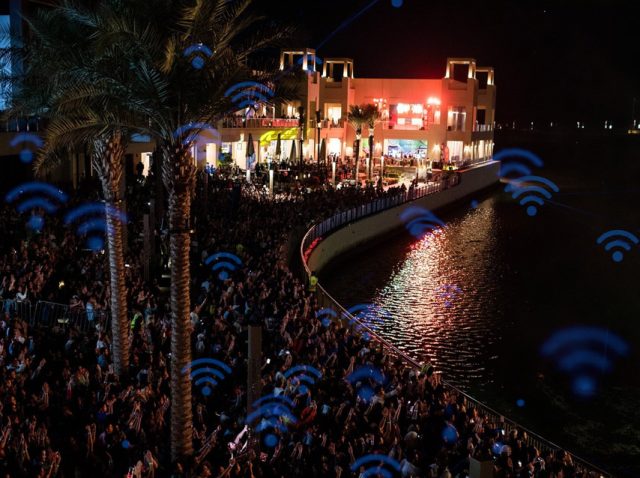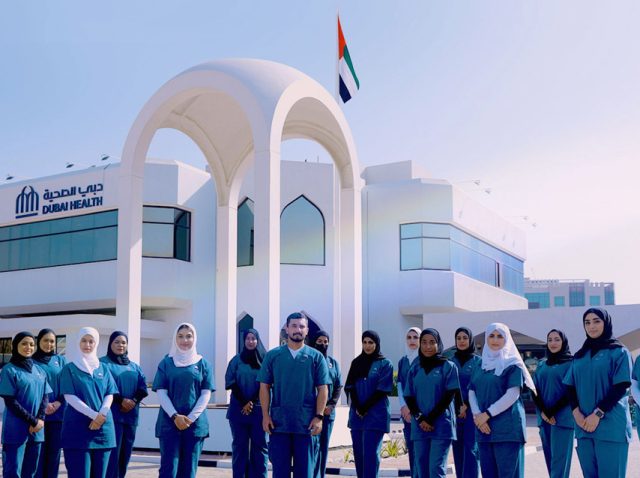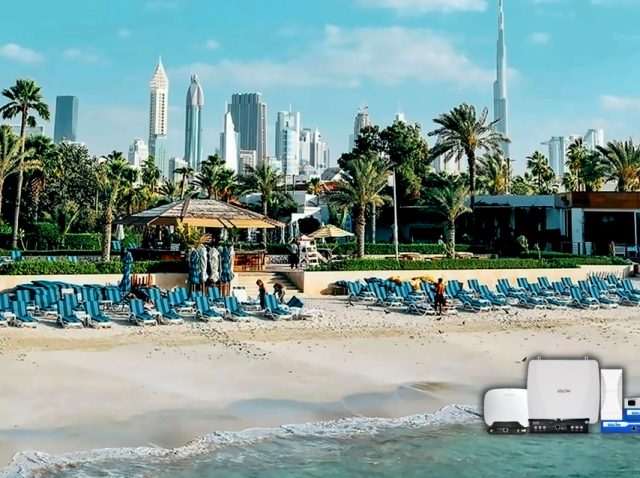In 2025, the Gulf Cooperation Council (GCC) countries—UAE, Saudi Arabia, Qatar, and Oman—are at the forefront of a digital revolution, with outdoor Wi-Fi emerging as a critical enabler of smart cities, tourism, and economic diversification. As these nations pursue ambitious visions like Saudi Vision 2030, UAE’s smart city leadership, Qatar’s post-World Cup legacy, and Oman’s Digital Oman 2030, the demand for reliable, high-speed outdoor connectivity is skyrocketing. This article explores the importance of outdoor Wi-Fi and the vast opportunities it presents across these countries, from urban hubs and tourist zones to futuristic gigaprojects and pilgrimage sites.
The Importance of Outdoor Wi-Fi in the GCC
Outdoor Wi-Fi is no longer a luxury—it’s a necessity in 2025. With the GCC’s high smartphone penetration (over 90% in the UAE and Saudi Arabia) and a growing reliance on IoT, AR/VR, and AI-driven services, seamless connectivity outdoors is essential for residents, tourists, and businesses alike.
- Economic Growth: Outdoor Wi-Fi supports e-commerce, smart tourism, and digital services, driving GDP growth in tech-forward economies.
- Quality of Life: Public Wi-Fi enhances access to information, navigation, and entertainment in parks, beaches, and transit hubs.
- Sustainability: Smart infrastructure powered by Wi-Fi reduces resource waste, aligning with GCC sustainability goals like net-zero emissions by 2050 (UAE, Saudi Arabia).
“Outdoor Wi-Fi is the invisible thread weaving together the GCC’s smart future—connecting people, places, and possibilities,” says Dr. Amina Al-Harbi, a digital infrastructure expert in Riyadh.
UAE: Dubai’s Smart City Leadership & Urban Expansion
Dubai’s Pioneering Role
Dubai continues to lead the GCC in smart city innovation, ranking among the top 20 globally in the 2025 IMD Smart City Index. Its Dubai 2040 Urban Master Plan emphasizes sustainable urban expansion, with outdoor Wi-Fi as a cornerstone for connectivity across sprawling districts.
- Urban Expansion: New communities like Dubai Hills, Damac Hills, and Mohammed Bin Rashid (MBR) City demand guest Wi-Fi for outdoor retail, dining, and residential areas.
- Smart Infrastructure: Wi-Fi supports IoT sensors for traffic, waste, and energy management, reducing Dubai’s carbon footprint.
Smart Tourism Zones
Dubai’s tourism zones are being reimagined with high-speed outdoor Wi-Fi to enhance visitor experiences.
- Deira Redevelopment: Revamped historic markets now offer Wi-Fi for digital navigation and AR-based heritage tours.
- Al Seef & Souk Al Marfa: These waterfront souks provide free Wi-Fi, enabling cashless payments and live event streaming.
- Hatta Tourist Zones: Mountain trails and eco-lodges feature Wi-Fi hotspots, supporting smart tourism apps and safety alerts.
Expo City Dubai: A Permanent Smart Legacy
Post-Expo 2020, Expo City Dubai has evolved into a 15-minute city, with 80% of its infrastructure repurposed. Outdoor Wi-Fi powers its smart ecosystem.
- Permanent Features: Wi-Fi-enabled smart bins, micro-mobility hubs, and digital signage enhance sustainability and convenience.
- COP28 Legacy: Hosting COP28 in 2023 cemented its role as a global sustainability hub, with Wi-Fi supporting real-time climate data sharing.
Public Transport Integration
The Roads and Transport Authority (RTA) has integrated Wi-Fi across its expanding network.
- Trams & Buses: Free Wi-Fi on trams and buses keeps commuters connected, with 5G upgrades planned for 2026.
- Metro Extensions: The Blue Line (approved 2024) will connect Expo City and Dubai Creek Harbour with Wi-Fi-enabled stations by 2029.
Digital Beaches & Parks
Beachfronts and parks are becoming digital hubs with Wi-Fi-driven amenities.
- JBR & Kite Beach: Wi-Fi supports smart showers, digital kiosks, and drone-based safety monitoring.
- Zabeel & Creek Park: Outdoor Wi-Fi powers fitness trackers, AR games, and live event broadcasts.
“Dubai’s outdoor Wi-Fi isn’t just about connectivity—it’s about creating a smarter, happier city,” notes RTA Director Fatima Al-Zahrani.
Community Retail
Outdoor shopping and dining in Dubai Hills, Damac Hills, and MBR City rely on guest Wi-Fi to attract residents and visitors.
- Seamless Experience: Wi-Fi enables mobile ordering, loyalty apps, and real-time promotions.
- Scalability: Coverage extends to pop-up markets and seasonal events, boosting local commerce.
Saudi Arabia: Vision 2030 and Gigaprojects
Vision 2030’s Connectivity Ambitions
Saudi Arabia’s Vision 2030 aims to diversify its economy, with outdoor Wi-Fi playing a pivotal role in its $1 trillion gigaprojects and public space upgrades.
Neom & The Line: Futuristic Connectivity
Neom, the $500 billion megacity, and The Line, its 170-km linear urban marvel, are redefining connectivity.
- Advanced Wi-Fi: Blanket coverage supports AI-driven traffic systems and outdoor AR/VR experiences for residents.
- Smart Design: Wi-Fi powers zero-carbon infrastructure, from solar-powered pods to drone deliveries.
Red Sea & AMAALA Projects
Luxury tourism projects like Red Sea and AMAALA demand premium outdoor Wi-Fi.
- Guest Experience: Wi-Fi enables smart villas, yacht tracking, and underwater IoT sensors for marine conservation.
- Coverage: Extends to beaches, infinity pools, and coral dive sites, ensuring uninterrupted luxury.
Public Spaces
Wi-Fi is transforming public areas across Riyadh, Jeddah, and Medina.
- Mosques & Souqs: Free Wi-Fi in mosques aids digital sermons, while markets like Souq Al-Zal offer online vendor directories.
- Parks & Heritage Sites: Riyadh Season zones and Al Rajhi Grand Mosque feature Wi-Fi for navigation and cultural apps.
Pilgrimage Support
Hajj and Umrah zones are embracing outdoor Wi-Fi to manage millions of pilgrims.
- Mina & Arafat: Wi-Fi hotspots provide real-time crowd updates and emergency alerts.
- Mecca Outskirts: Coverage supports smart wearables for pilgrim tracking, easing logistics.
Digital Highways
Saudi Arabia’s highways are becoming smarter with Wi-Fi upgrades.
- Rest Stops & Petrol Stations: Wi-Fi offers traveler services like route planning and EV charging updates.
- Smart Highways: IoT sensors paired with Wi-Fi monitor traffic, enhancing safety on the Riyadh-Mecca corridor.
“Vision 2030 isn’t just about buildings—it’s about connecting every corner of the Kingdom digitally,” says Eng. Khalid Al-Otaibi, a Neom infrastructure lead.
Qatar: Post-World Cup Smart Infrastructure
Leveraging World Cup Legacy
After hosting the 2022 FIFA World Cup, Qatar is repurposing its infrastructure with outdoor Wi-Fi as a key component.
Stadium Precincts
World Cup stadium areas are now multi-use hubs.
- Wi-Fi Zones: Lusail Stadium and Al Bayt host events and exhibitions with blanket Wi-Fi coverage.
- Public Gatherings: Outdoor screens and apps rely on Wi-Fi for live streaming and ticketing.
Tourist Hubs
Qatar’s iconic tourist spots are Wi-Fi-ready.
- Souq Waqif & The Pearl: Free Wi-Fi enhances shopping and dining with digital guides.
- Katara & Lusail Corniche: Cultural events and waterfront activities leverage Wi-Fi for AR tours and safety.
Smart Municipality Projects
Outdoor Wi-Fi supports Qatar’s smart urban initiatives.
- Parks & Gyms: Aspire Park and open-air gyms offer Wi-Fi for fitness apps and visitor info.
- Cycling Tracks: Connectivity along Doha’s bike lanes aids navigation and safety.
Transport Hubs
Qatar’s transport network is increasingly connected.
- Bus Stations & Metro: Wi-Fi at Qatar Rail stations and bus stops improves commuter experiences.
- Water Taxi Areas: Ports like The Pearl feature Wi-Fi for ticketing and schedules.
“Post-World Cup, Wi-Fi is turning Qatar’s infrastructure into a lasting smart legacy,” says Hamad Al-Kuwari, a Doha urban planner.
Oman: Digital Oman 2030 Vision
Digital Transformation Goals
Oman’s Vision 2040, with its Digital Oman 2030 pillar, prioritizes connectivity to boost tourism, trade, and public services.
Seafront Developments
Coastal areas are embracing outdoor Wi-Fi.
- Muttrah Corniche & Al Mouj: Wi-Fi enhances waterfront dining and yachting experiences.
- Salalah Beach: Seasonal tourism during Khareef benefits from Wi-Fi for apps and safety.
Mountain & Desert Tourism
Oman’s rugged landscapes are going digital.
- Jebel Akhdar: Wi-Fi hotspots support eco-lodges and hiking trails with real-time weather updates.
- Wahiba Sands: Desert camps offer Wi-Fi for navigation and guest services.
Smart Cities
Muscat and Duqm are emerging as smart hubs.
- Muscat: Public Wi-Fi in parks and souqs improves accessibility.
- Duqm: New developments feature Wi-Fi for residential and industrial zones.
Ports & Trade Zones
Oman’s economic zones are Wi-Fi-enabled.
- SEZs & Ports: Duqm Port and Salalah Free Zone use Wi-Fi for logistics and worker welfare.
- Industrial Zones: Connectivity supports IoT-driven manufacturing and trade.
“Digital Oman 2030 is about connecting our heritage with our future—Wi-Fi makes it possible,” says Sultan Al-Busaidi, an Omani tech strategist.
Opportunities and Challenges
Opportunities Across the GCC
- Tourism Boost: Wi-Fi enhances visitor experiences, driving repeat tourism.
- Economic Diversification: Connectivity supports non-oil sectors like tech and logistics.
- Smart Governance: Wi-Fi enables real-time data for urban planning and safety.
Challenges
- Cost: Deploying Wi-Fi across vast, remote areas (e.g., Neom, Wahiba Sands) is expensive.
- Climate: Extreme heat and sandstorms in the GCC test hardware durability.
- Adoption: Ensuring rural populations and older demographics use Wi-Fi remains a hurdle.
A Connected GCC Future
In 2025, outdoor Wi-Fi is reshaping the GCC, from Dubai’s smart tourism zones to Saudi Arabia’s gigaprojects, Qatar’s World Cup legacy, and Oman’s digital vision. It’s not just about staying connected—it’s about enabling smarter cities, richer experiences, and sustainable growth. As these nations invest billions in infrastructure, outdoor Wi-Fi stands as a vital link, uniting urban innovation with cultural heritage and natural wonders.





